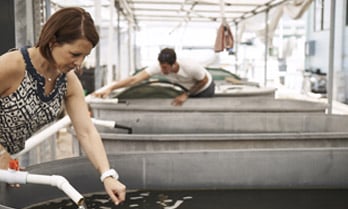







12 October 2020
A sustainable coating that could save thousands of homes from bushfire
“Like millions of Australians I watched with horror the bushfires that ravaged part of the country earlier this year. I hope my research can protect many homes in fire-stricken areas.”
The rate of global warming is higher than predicted, leading to more severe natural disasters. Especially in Australia where the bushfire season is becoming more complex each year, fire-prone communities need better protection for their homes.
Chemical and Civil Engineer Dr Kate Nguyen looks to create buildings that are greener and bushfire safe by developing a sustainable coating to fire-proof houses.
New building materials that offer superior insulation, like expanded polystyrene, increase a building’s thermal efficiency but can also increase fire risk. When exposed to bushfire conditions, the highly combustible nature of these insulation materials can significantly intensify fuel load – the equivalent of 1 litre of petrol per kilogram of insulation.
“Bushfires are different to residential fires. A bushfire can have very high temperature and spread quickly. So if we can delay the time that construction material burns, we can protect more homes.”
The ceramic-like coating Kate has created is made from industrial waste, often from the coal and mining industry, which has high levels of aluminium and silicon. It’s a way of sustainably reusing waste that would ordinarily go to landfill, to deliver an environmentally friendly coating that can provide a protective envelope over a building.
The sustainability benefits don’t end there. The new fire-resistant coating is made through a process that emits up to 90% fewer greenhouse gas emissions than conventional manufacturing approaches. In addition, the coating will help reduce gaps in the building envelope, increasing thermal efficiency so homes retain warmth in winter or keep cooler in summer, and require less energy to heat and cool.
“Climate change is increasing bushfires each year, and the global pandemic means we’re spending more time at home. It is more important than ever to make our homes safe, which includes fire proofing them, so we don’t see a repeat of last summer’s devastation.”
“We know bushfires are growing in severity, with the natural progression of climate change, so we need to find new and innovative measures to protect our vulnerable communities.”
Kate hopes her ultra-low carbon emission coating can provide protection for millions of houses in bushfire-prone areas. She is working to have this breakthrough coating available within a year, to provide protection for residents and their homes.